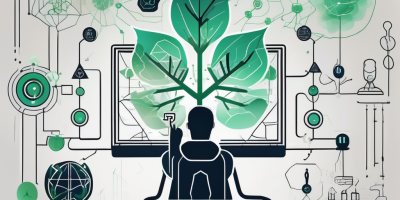The rapid development and adoption of digital technologies have revolutionized the way we live, work, and interact with the world around us. Among the many technological advancements that have emerged in recent years, three key areas have garnered significant attention and are shaping the future of the digital landscape: blockchain, crypto, and the Internet of Things (IoT). These three domains, when combined, create a powerful synergy that opens up exciting possibilities and opportunities. In this article, we will explore the intersection of blockchain, crypto, and IoT, and examine the potential benefits and challenges that arise from this convergence.
Understanding Blockchain, Crypto, and IoT
Defining Blockchain Technology
Let’s start by delving into the world of blockchain technology. At its core, blockchain is a decentralized and distributed ledger that records transactions across multiple computers. This technology ensures transparency, security, and immutability of the data it holds. By eliminating intermediaries and relying on cryptographic algorithms, blockchain enables peer-to-peer transactions and reduces the risk of data manipulation.
Blockchain technology has revolutionized various industries, including finance, supply chain management, healthcare, and more. In the financial sector, blockchain has the potential to streamline cross-border transactions, reduce costs, and increase efficiency. It also provides a secure and transparent platform for digital identity verification, eliminating the need for cumbersome paperwork and reducing the risk of identity theft.
In supply chain management, blockchain enables end-to-end traceability, allowing businesses to track the movement of goods from the point of origin to the final destination. This not only enhances transparency but also helps in detecting and preventing counterfeit products, ensuring consumer safety.
Moreover, blockchain technology has found applications in the healthcare industry, where it can securely store and share patient data across different healthcare providers. This facilitates seamless access to medical records, enhances collaboration among healthcare professionals, and improves patient outcomes.
The Basics of Cryptocurrencies
In the realm of cryptocurrencies, blockchain plays a fundamental role. Cryptocurrencies, such as Bitcoin and Ethereum, are digital assets that utilize blockchain technology for secure and decentralized transactions. These digital currencies have gained popularity due to their potential to disrupt traditional financial systems and provide users with financial autonomy.
Bitcoin, the first and most well-known cryptocurrency, was introduced in 2009 by an anonymous person or group of people known as Satoshi Nakamoto. It operates on a decentralized network of computers, known as nodes, that validate and record transactions on the blockchain. Bitcoin’s decentralized nature eliminates the need for intermediaries, such as banks, and allows users to have full control over their funds.
Ethereum, on the other hand, goes beyond being just a cryptocurrency. It is a decentralized platform that enables the creation of smart contracts and decentralized applications (DApps). Smart contracts are self-executing contracts with the terms of the agreement directly written into code. These contracts automatically execute when the predetermined conditions are met, eliminating the need for intermediaries and ensuring trust and transparency.
With the rise of cryptocurrencies, the concept of Initial Coin Offerings (ICOs) has also emerged. ICOs are a fundraising method in which new projects sell their underlying cryptocurrency tokens in exchange for funding. This has opened up new avenues for startups and entrepreneurs to raise capital and has democratized investment opportunities.
An Introduction to the Internet of Things (IoT)
The Internet of Things, on the other hand, refers to the network of interconnected devices that communicate and exchange data with one another. IoT devices, ranging from smart appliances to wearable devices and industrial sensors, collect and share vast amounts of data. This data can be utilized to optimize processes, enhance efficiency, and improve decision-making.
IoT has transformed various industries, including agriculture, healthcare, transportation, and manufacturing. In agriculture, IoT sensors can monitor soil moisture levels, temperature, and humidity, allowing farmers to optimize irrigation and reduce water waste. This not only improves crop yield but also conserves valuable resources.
In healthcare, IoT devices can track vital signs, monitor medication adherence, and provide remote patient monitoring. This enables healthcare professionals to provide personalized care, detect health issues early on, and reduce hospital readmissions. IoT also plays a crucial role in telemedicine, allowing patients to consult with doctors remotely and receive timely medical advice.
Furthermore, IoT has revolutionized the transportation industry with the advent of connected cars and smart traffic management systems. Connected cars can communicate with each other and with infrastructure, enabling real-time traffic updates, efficient route planning, and enhanced safety features. Smart traffic management systems use IoT sensors and data analytics to optimize traffic flow, reduce congestion, and minimize carbon emissions.
In the manufacturing sector, IoT has given rise to the concept of Industry 4.0, where machines, sensors, and systems are interconnected to create smart factories. IoT-enabled sensors can monitor equipment performance, predict maintenance needs, and optimize production processes. This leads to increased productivity, reduced downtime, and improved product quality.
As the world becomes more interconnected, the potential of blockchain, cryptocurrencies, and IoT continues to expand. These technologies hold the promise of transforming industries, enhancing security and transparency, and empowering individuals and businesses alike.
The Convergence of Blockchain, Crypto, and IoT
How Blockchain and Crypto Complement Each Other
The convergence of blockchain and crypto lies in their shared goals of decentralization, transparency, and security. By combining blockchain technology with cryptocurrencies, we can create a robust and tamper-proof system for financial transactions. Crypto can serve as a medium of exchange within a blockchain-based ecosystem, enabling secure and frictionless transactions.
The Role of IoT in Blockchain and Crypto
On the other hand, the Internet of Things can greatly benefit from blockchain and cryptocurrencies. Blockchain provides a secure and efficient way to store and manage the vast amounts of data generated by IoT devices. Additionally, the integration of IoT with blockchain and crypto enables the development of decentralized applications and smart contracts that can automate processes, verify authenticity, and enhance data integrity.
At the fascinating junction of Blockchain, Crypto, and IoT, a new technological marvel is making its presence felt. As these technologies intertwine to create more complex systems and solutions, there is a growing need to amplify results with quantum AI.
By leveraging the capabilities of quantum computing interlaced with artificial intelligence, Quantum AI trading can swiftly process vast streams of data generated at this intersection, ensuring more accurate predictions and smarter transactions. This integration promises to add another layer of sophistication to the rapidly evolving digital ecosystem.
Potential Benefits of This Intersection
Enhanced Security Features
One of the key advantages of the intersection of blockchain, crypto, and IoT is the enhanced security it offers. Blockchain’s decentralized nature ensures that data is stored across multiple nodes, making it resistant to tampering and hacking attempts. When combined with cryptographic algorithms, this creates a highly secure environment for storing and exchanging data. This is particularly crucial in industries such as finance, healthcare, and supply chain, where data security and privacy are paramount.
Improved Efficiency and Transparency
Another benefit of this convergence is improved efficiency and transparency. By leveraging blockchain and crypto, IoT devices can autonomously execute and verify transactions, eliminating the need for intermediaries. This not only reduces costs but also minimizes the potential for errors and delays. Furthermore, the decentralized nature of blockchain ensures transparency, allowing stakeholders to access and verify the data, leading to increased trust in the system.
Potential for Innovation and Growth
The intersection of blockchain, crypto, and IoT creates an ecosystem ripe for innovation and growth. With the ability to automate processes, eliminate intermediaries, and enhance data security, new business models and applications can flourish. From decentralized energy grids to secure supply chain management and smart healthcare systems, the potential applications are vast. This convergence provides an environment that encourages collaboration, experimentation, and the development of disruptive solutions.
Challenges and Limitations
Technological Challenges
While the intersection of blockchain, crypto, and IoT brings forth numerous opportunities, it also presents several challenges. One of the key challenges is scalability. Blockchain technology, in its current state, faces limitations in processing a large number of transactions efficiently. To realize the full potential of this convergence, scalability solutions must be developed to accommodate the growing demands of IoT devices and crypto transactions.
Regulatory and Legal Concerns
Regulatory and legal concerns also pose a challenge in this intersection of technologies. The decentralized nature of blockchain and the anonymity associated with cryptocurrencies have raised questions related to compliance, taxation, and consumer protection. Governments and regulatory bodies are exploring ways to strike a balance between fostering innovation and ensuring the safety and security of users.
Privacy and Security Issues
Lastly, the intersection of blockchain, crypto, and IoT brings about privacy and security concerns. With the vast amount of data generated by IoT devices and shared on the blockchain, ensuring the privacy of sensitive information becomes paramount. Additionally, as with any technology, there is always a risk of security breaches and malicious attacks. Robust security measures must be implemented to safeguard data and protect against unauthorized access.
In conclusion, the convergence of blockchain, crypto, and IoT holds immense potential to revolutionize various industries and reshape the digital landscape. This intersection brings enhanced security features, improved efficiency, and transparency, and serves as a catalyst for innovation and growth. However, to fully leverage the benefits, technological challenges, regulatory concerns, and privacy and security issues must be addressed. As these technologies continue to evolve, it is crucial for stakeholders to collaborate, adapt, and navigate the complex landscape to unlock the boundless opportunities that lie ahead.













Comments